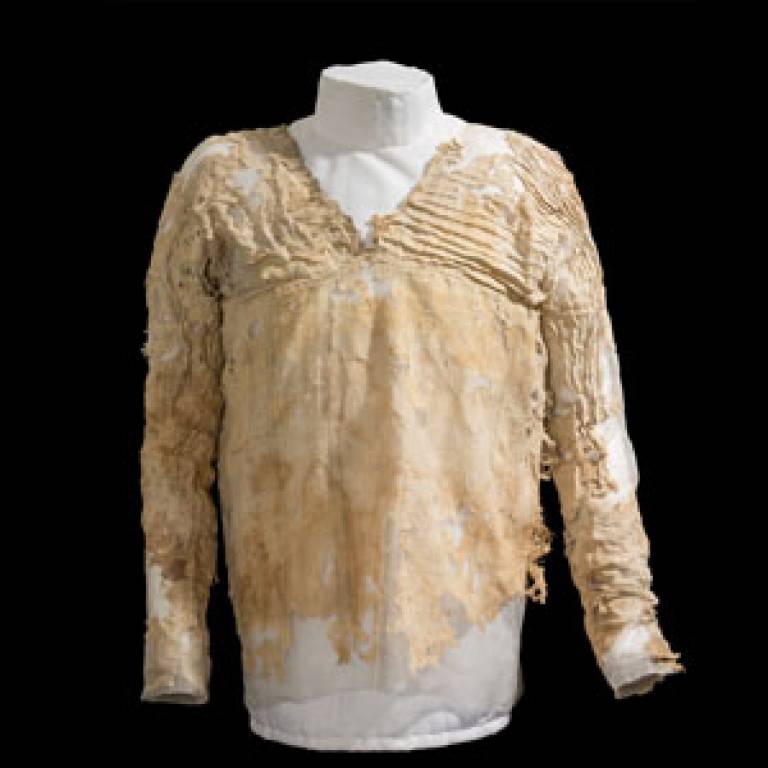In 2015, an intriguing discovery shed new light on the ancient world: a remarkable dress, believed to be Egypt’s oldest garment, had its age pinpointed through radiocarbon testing. This dress, woven from linen, captivates not only with its age but also with its remarkable preservation, defying the odds of time to offer a glimpse into the distant past.
Initially excavated in 1913 from a tomb at Tarkhan, an Egyptian cemetery near Cairo, the dress lay hidden alongside other textiles until 1977 when it found its way to the Victoria and Albert Museum in London. It wasn’t until 2015, however, that its true age was revealed, thanks to the meticulous work of researchers from the University of Oxford’s radiocarbon unit, led by Dr. Michael Dee.
Utilizing radiocarbon dating, the team analyzed a minuscule sample of the dress, measuring just 2.24 milligrams. This tiny fragment held the key to unlocking the dress’s age, providing insights into its origins. Linen, the material from which the dress is woven, proved ideal for radiocarbon dating due to its composition of flax fibers, which grow relatively quickly.
The results of the testing unveiled a fascinating revelation: the dress dates back to a period between 3482-3102 BC, with 95% accuracy. This not only confirmed its status as Egypt’s oldest garment but also hinted at the possibility that it predates the First Dynasty, challenging previous assumptions about its age.
Dr. Alice Stevenson, Curator at the UCL Petrie Museum of Egyptian Archaeology, expressed awe at the dress’s exceptional preservation. She highlighted the rarity of finding such perishable textiles in the archaeological record, let alone complete articles of clothing like the Tarkhan Dress. Its survival offers a rare window into ancient Egyptian society, providing tantalizing clues about fashion, craftsmanship, and daily life.
Describing the dress’s physical attributes, it consists of three pieces of hand-woven linen, adorned with a natural pale grey stripe and featuring knife-pleated sleeves and bodice. While the exact length remains unknown due to a missing hem, its dimensions suggest it was tailored for a young teenager or slender woman. Signs of wear indicate that it was not merely a ceremonial garment but likely worn in everyday life, adding a human dimension to its story.
Today, the Tarkhan Dress resides at the UCL Petrie Museum of Egyptian Archaeology, where it continues to captivate visitors with its ancient allure. Its journey from the sands of ancient Egypt to the halls of a modern museum speaks to the enduring fascination with the mysteries of the past and the tireless efforts of researchers to unlock their secrets.
In unraveling the age-old enigma of the Tarkhan Dress, we are reminded of the power of scientific inquiry to illuminate the shadows of history, offering a richer understanding of our shared human heritage. As this ancient garment weaves together threads of the past and present, it serves as a poignant reminder of the timeless allure of discovery and the enduring legacy of those who came before us.
Source: University College London
